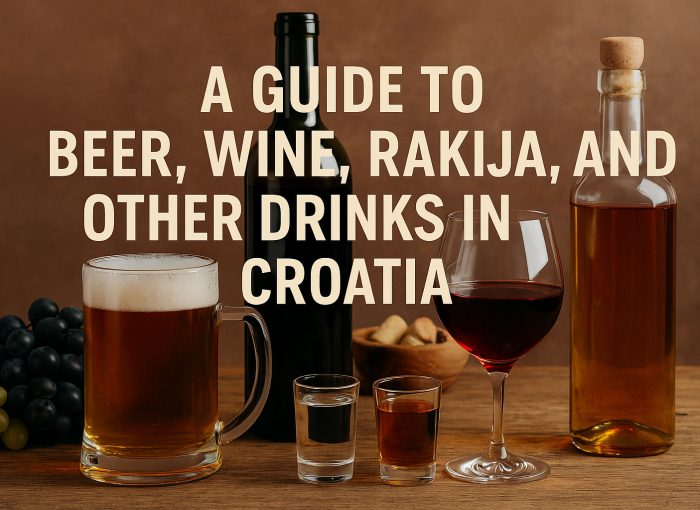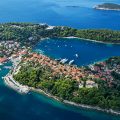Discover the vibrant drinking culture of Croatia, from craft beers to rakija traditions and world-class wines along the Adriatic coast.
Croatia’s drinking culture is as sun-drenched and soulful as its Adriatic coastline. Whether you’re clinking glasses of rakija in a rural konoba (tavern), sipping crisp white wine in an Istrian vineyard, or enjoying a cold pivo (beer) at a seaside café, there’s a rich tradition waiting to be savored — glass by glass.
Table of Contents
Don’t miss our guide to eating in Croatia too!
Here’s everything you need to know before you toast “živjeli!” (cheers!) like a local.
🍻 Croatian Beer (Pivo)
When it comes to famous beer destinations, Croatia might not top the global charts — and honestly, that’s fair. Traditional Croatian beers, although deeply embedded in everyday life, have long prioritized easy drinking over refined taste. Brands like Ožujsko and Karlovačko are virtually everywhere, from beach bars to tiny village cafés, offering light lagers designed to be refreshing more than memorable. They’re the kind of beers you reach for when the sun is blazing and you’re after something cold and familiar, not necessarily complex.
Ožujsko, Croatia’s best-selling beer, is the classic choice: a crisp, mildly bitter lager that gets the job done. Karlovačko, brewed in the city of Karlovac, has a similar profile — slightly softer but still firmly in the “basic lager” category. Pan is another staple, known for being a little sweeter and lighter, and it tends to be more popular in the inland regions, especially in the north. For those who prefer something with more character, Tomislav — a dark, stronger beer — offers a richer, maltier experience, though it’s still quite smooth and easygoing. Velebitsko, brewed near the rugged Velebit mountains, brings a bit more soul to the glass with its earthy, slightly heavier flavor, often ranked as a hidden favorite among beer lovers.
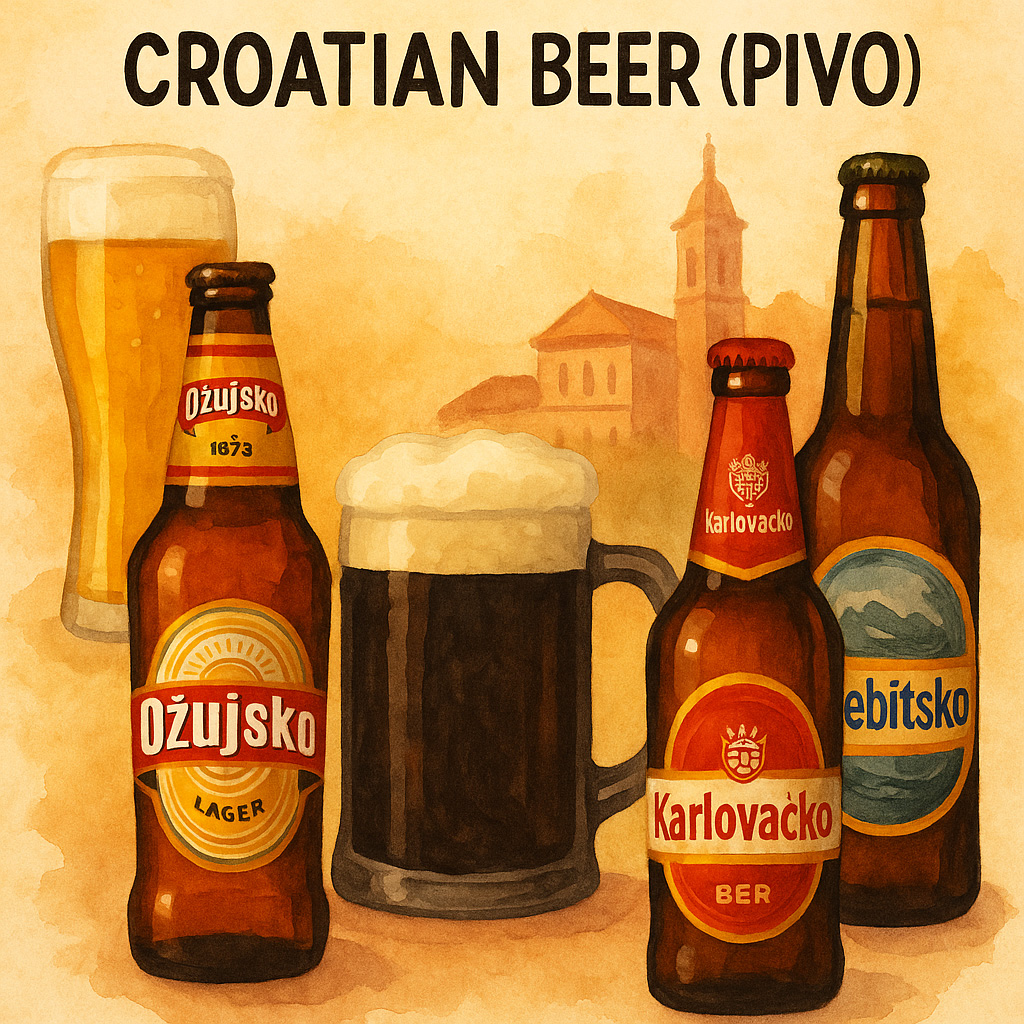
Yet, for true beer enthusiasts, Croatia’s mainstream offerings might leave you a little underwhelmed. The major brands dominate bars, festivals, and supermarkets, but they’re built more for casual summer sipping than for flavor exploration.
Luckily, a craft beer revolution has quietly but steadily changed the landscape.
In the past decade, Croatia has experienced a microbrewery boom that has reshaped its drinking culture, especially among younger locals and adventurous travelers. Nowhere is this more visible than in Zagreb, which has firmly established itself as Croatia’s craft beer capital. Breweries like The Garden Brewery, Medvedgrad, and Nova Runda have gained cult followings, offering everything from hoppy IPAs to rich porters and silky stouts. Walk into a craft pub in Zagreb, and you’ll find an impressive lineup that rivals anything in Berlin or London.
Split isn’t far behind, with Barba craft beers making waves among the Dalmatian crowd. Meanwhile, over in Rijeka, a city known for its alternative spirit, King’s Brew and other small-scale producers have carved out a vibrant, indie beer scene that’s only growing.
You’ll find plenty of creativity across Croatia’s newer breweries — from tropical-flavored IPAs perfect for the coast, to robust, coffee-rich porters that taste like a warm hug on a rainy night. Summertime often brings a wave of refreshing pale ales and zesty lagers, brewed in small batches with local love and minimal additives.
That said, outside the bigger cities and touristy hotspots, don’t expect to stumble upon a craft tap at the local konoba (traditional tavern). Rural areas largely stick to the classics: a choice between Ožujsko and Karlovačko, and maybe Pan if you’re lucky. But honestly, when you’re perched on a stone terrace overlooking the Adriatic with the scent of grilled fish in the air, even a basic lager somehow tastes like magic.
Tip: If you’re a craft beer fan, seek out specialized bars in cities, or visit breweries directly — many offer tours and tastings. And if you find yourself in a village without craft options, just embrace the local vibe, order what everyone else is drinking, and enjoy the simple pleasure of a cold beer under the Croatian sun.
🍷 Croatian Wine (Vino)
Unlike its beer scene, Croatia’s wine world is a hidden treasure chest that’s rapidly gaining the global recognition it deserves. Along the coastline and scattered across the sun-drenched islands, you’ll find world-class wines that rival those of Italy, France, or Spain — but with a unique Croatian soul.

Wine has been part of the culture here since ancient times, dating back over 2,500 years when the Greeks first planted vines on the islands of Hvar and Vis. Today, a new generation of passionate winemakers is bringing fresh energy, blending traditional methods with modern techniques. Boutique wineries, family-run estates, and experimental vineyards are popping up everywhere, especially along the Adriatic coast, producing wines that are turning heads at international competitions.
And the best part? Many of these wines are still affordable and easy to enjoy right at the source, surrounded by olive groves, limestone hills, and views of the glittering sea.
The Character of Croatian Wines
Croatia’s wine is as varied as its geography. Coastal regions like Istria and Dalmatia are known for producing full-bodied, aromatic whites and robust reds, shaped by the salty sea air and the rocky, sunbaked soil. Inland areas like Slavonia and the Croatian Uplands lean toward crisper whites, benefiting from cooler continental climates.
Generally speaking:
- White wines dominate in the north and along the Istrian coast.
- Red wines steal the spotlight further south, particularly along Dalmatia’s rugged coastline and islands.
🏖️ White Wines of Croatia
Croatia’s whites are often fresh, mineral-driven, and bursting with character. Perfect for the Mediterranean lifestyle — think grilled fish, sunny terraces, and long, lazy lunches.

Key varieties to look for:
- Malvazija Istarska
Grown mainly in Istria, this is one of Croatia’s flagship whites. Expect floral aromas, notes of green apple and citrus, and a crisp, slightly salty finish. It’s the ideal companion to seafood and truffle dishes. - Pošip
Originating from the island of Korčula, Pošip offers a fuller body, sometimes even oak-aged, with ripe stone fruit flavors, hints of almonds, and a lingering minerality. It’s one of the most food-friendly Croatian whites. - Graševina
Dominant in Slavonia and inland regions, Graševina (also known as Welschriesling) is fresh, lightly floral, and easy-drinking. Great for everyday meals and summer sipping. - Bogdanuša
A rare gem from Hvar island. Light, delicate, and charming — a true Mediterranean wine meant for sunshine and seaside tables. - Žlahtina
Native to the island of Krk, Žlahtina is a light-bodied, dry white wine with crisp acidity and flavors of green apple and citrus blossom. It’s refreshingly simple, easy to love, and a perfect match for Adriatic seafood.
🌿 Red Wines of Croatia
When it comes to reds, Croatia shines with bold, rustic styles shaped by wild coastal landscapes, rocky vineyards, and relentless sunshine.
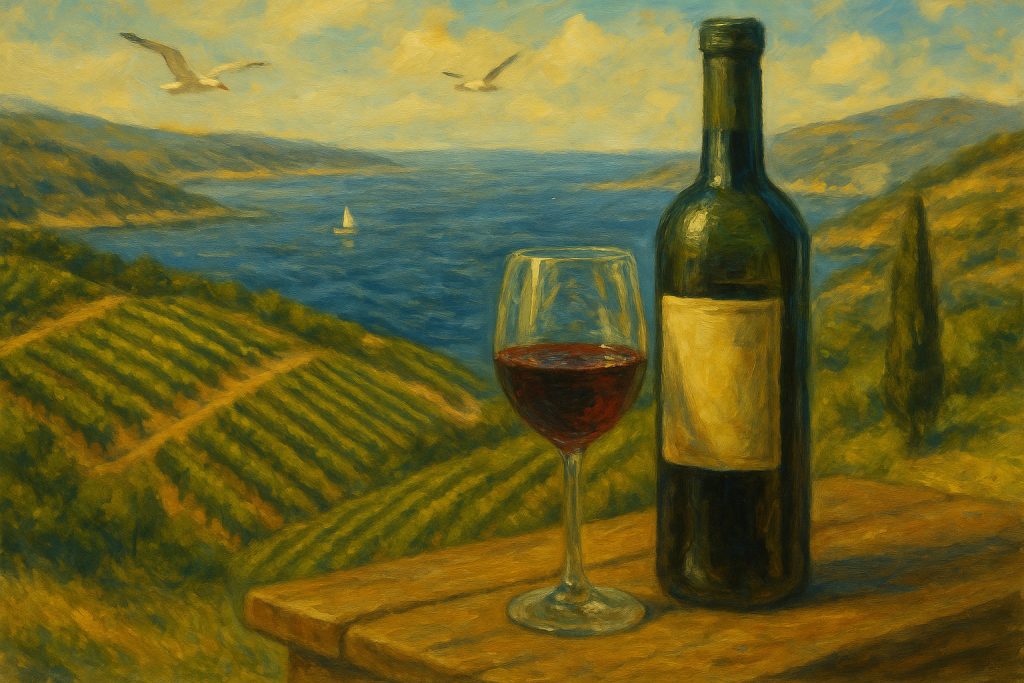
Stars of the red scene:
- Plavac Mali
Croatia’s king of reds. This ancient grape thrives along the Dalmatian coast, giving rich, powerful wines with dark fruit flavors, spice, and a slightly earthy backbone. If you love Zinfandel (its close relative), you’ll fall hard for Plavac Mali. - Dingač
A premium expression of Plavac Mali, grown on the steep, sun-baked slopes of the Pelješac Peninsula. Dingač wines are deep, intense, and complex, with flavors of dark berries, dried figs, herbs, and a robust, often slightly salty minerality. It’s considered one of Croatia’s finest reds and a must-try for serious wine lovers. - Teran
Istria’s native red, Teran is lively and rustic, with bright acidity, wild berry flavors, and often a savory, peppery finish. A wonderful choice if you enjoy lighter but characterful reds. - Babić
Another Dalmatian native, Babić offers concentrated flavors of blackberry, Mediterranean herbs, and sometimes a smoky note. It’s less internationally known but locally treasured. - Crljenak Kaštelanski
Fun fact: This grape was discovered to be the original Zinfandel! Native to Dalmatia, it produces rich, juicy reds with vibrant berry notes and a silky texture.
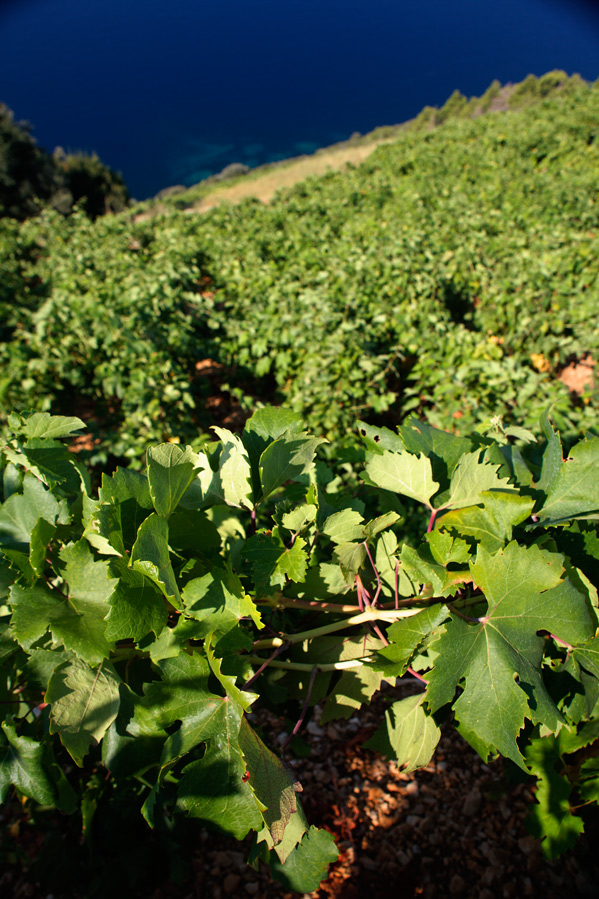
Planning Your Wine Adventures 🍇
Traveling through Croatia gives you endless chances to sip extraordinary wines right at the source. You’ll find charming vinska kuća (wine houses) tucked away on Istrian hills, along island roads in Hvar and Korčula, or perched above Dalmatian villages.
Most wineries warmly welcome visitors, offering tastings often paired with homemade olive oils, cheeses, and prosciutto. Many also sell direct from the vineyard — a perfect opportunity to pick up a few bottles you’ll never find outside Croatia.
Pro tip:
Don’t skip the local “house wine” at small konobas — more often than not, it’s produced by a neighbor or family member and tastes fantastic for a fraction of the price you’d pay abroad.
And remember: in Croatia, wine isn’t just a drink. It’s a celebration of the land, the sun, and the ancient traditions that run deep in every glass.
🥃 Rakija: Croatia’s Spirit
Rakija is the heartbeat of Croatian hospitality, an amber or crystal-clear fruit brandy that carries centuries of tradition in every fiery sip. It’s not just a drink — it’s a symbol of welcome, friendship, and respect.
Often homemade and fiercely guarded as a point of family pride, rakija is distilled from whatever fruit the land gives: plums, grapes, figs, pears, even wild herbs. No Croatian gathering is complete without it. Whether you’re arriving at a village home, celebrating a wedding, mourning at a funeral, or simply visiting a friend, a tiny shot glass of rakija will almost certainly be thrust into your hand with a warm smile and a hearty “živjeli!” (cheers).
It’s customary to accept — even if only a sip — because refusing can feel like refusing the hospitality itself. Some varieties, like travarica (herbal rakija) or medica (honey rakija), are softer and sweeter, perfect for beginners. Others, like the strong šljivovica (plum brandy), pack a serious punch that will warm you from the inside out. Either way, rakija isn’t about drinking fast — it’s about savoring tradition, one potent drop at a time.
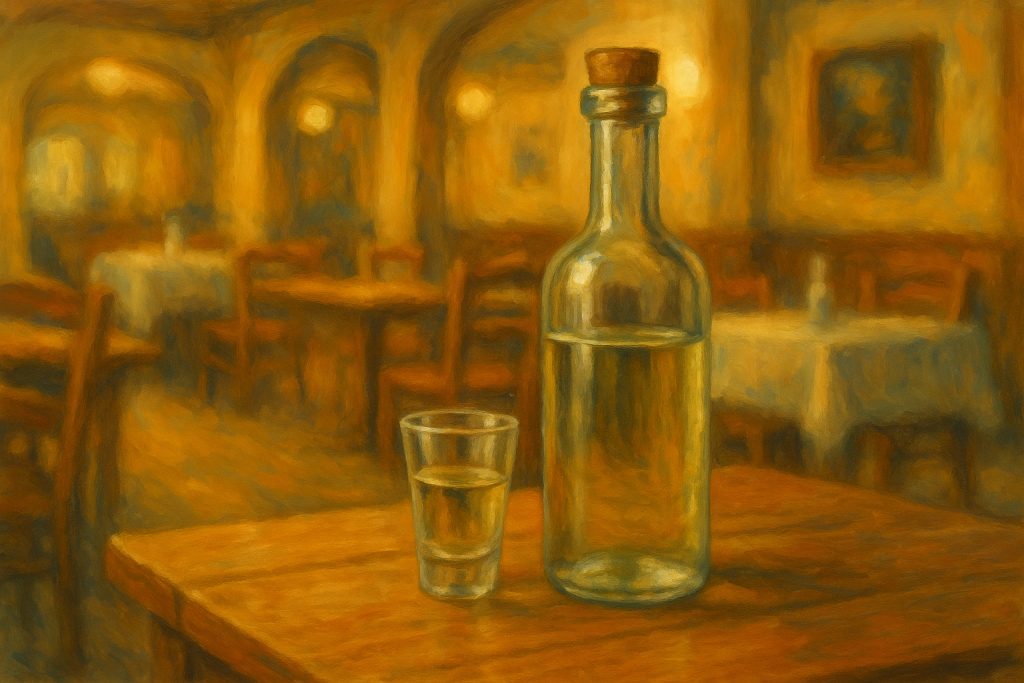
Types of Rakija
- Šljivovica (plum) – Bold and smoky; the classic.
- Lozovača (grape) – Clean, strong, and aromatic.
- Travarica (herbal) – Infused with wild herbs, great as a digestif.
- Medica (honey rakija) – Sweet, smoother, and perfect for beginners.
- Orahovac (green walnut) – Sweet, nutty, and slightly bitter.
Where to Drink It
- Konobas (traditional taverns)
- Family-run agritourisms (especially inland and islands)
- Festivals and weddings (you won’t escape without at least one shot)
Tip: Always accept the first shot offered — it’s considered rude to refuse a host’s rakija.
🍹 Other Popular Drinks
While beer, wine, and rakija dominate the spotlight, Croatia’s drinking culture has a few more surprises tucked away. From quirky local favorites to historic liqueurs, these drinks tell their own stories of tradition, creativity, and the easygoing spirit of life along the Adriatic. Some are beloved classics, others are more of an acquired taste — but all are worth a sip (or two) if you truly want to drink like a local.
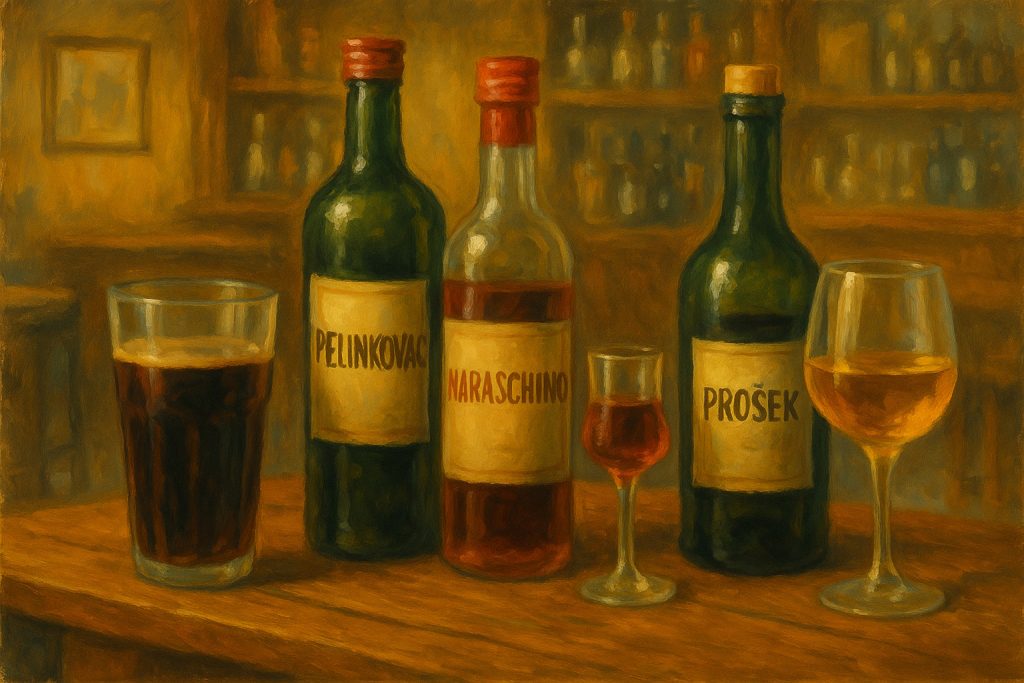
- Bambus. A wild concoction of red wine and Coca-Cola. Don’t knock it till you try it.
- Pelinkovac. A dark, herbal liqueur similar to Jägermeister — bitter, slightly sweet, and an acquired taste.
- Maraschino. A luxurious cherry liqueur from Zadar, dating back to the 18th century.
- Prošek. Traditional Dalmatian dessert wine, sweet and syrupy (not to be confused with Prosecco!).
Cocktails
Big cities and the islands like Hvar, Split, Dubrovnik now have cocktail bars with impressive menus, but traditionally Croatians stick to simpler drinks.
Planning Your Drink Adventures 🍷🍻
If you want to truly dive into Croatia’s drinking culture, there’s no better way than hitting the road — preferably a wine road. Wine tours are especially popular in regions like Istria and the Pelješac Peninsula, where scenic routes wind through sun-drenched vineyards and charming boutique wineries welcome visitors with open arms (and full glasses). For beer lovers, timing your trip with one of Croatia’s growing craft beer festivals is a treat, with the Zagreb Craft Beer Festival in March standing out as a highlight.
Of course, no adventure would be complete without a visit to a konoba, a rustic local tavern where house-made wine and rakija often flow straight from wooden barrels, served with hearty meals and warm conversation. As for prices, drinking in Croatia remains refreshingly affordable: expect to pay around €2–€3 for a beer, €1.50–€2.50 for a glass of local wine, and about €2–€3 for a shot of rakija. And a friendly summer reminder — stay hydrated. Under the Croatian sun, even a small glass of rakija can feel like a fiery punch!
Where Shopping Lists Meet Social Hour
In Croatia, especially in smaller towns and villages, drinking in front of the local store is more than just a pastime — it’s a cultural ritual. While it might seem casual or even rough at first glance, it’s not about heavy drinking or drunkenness.
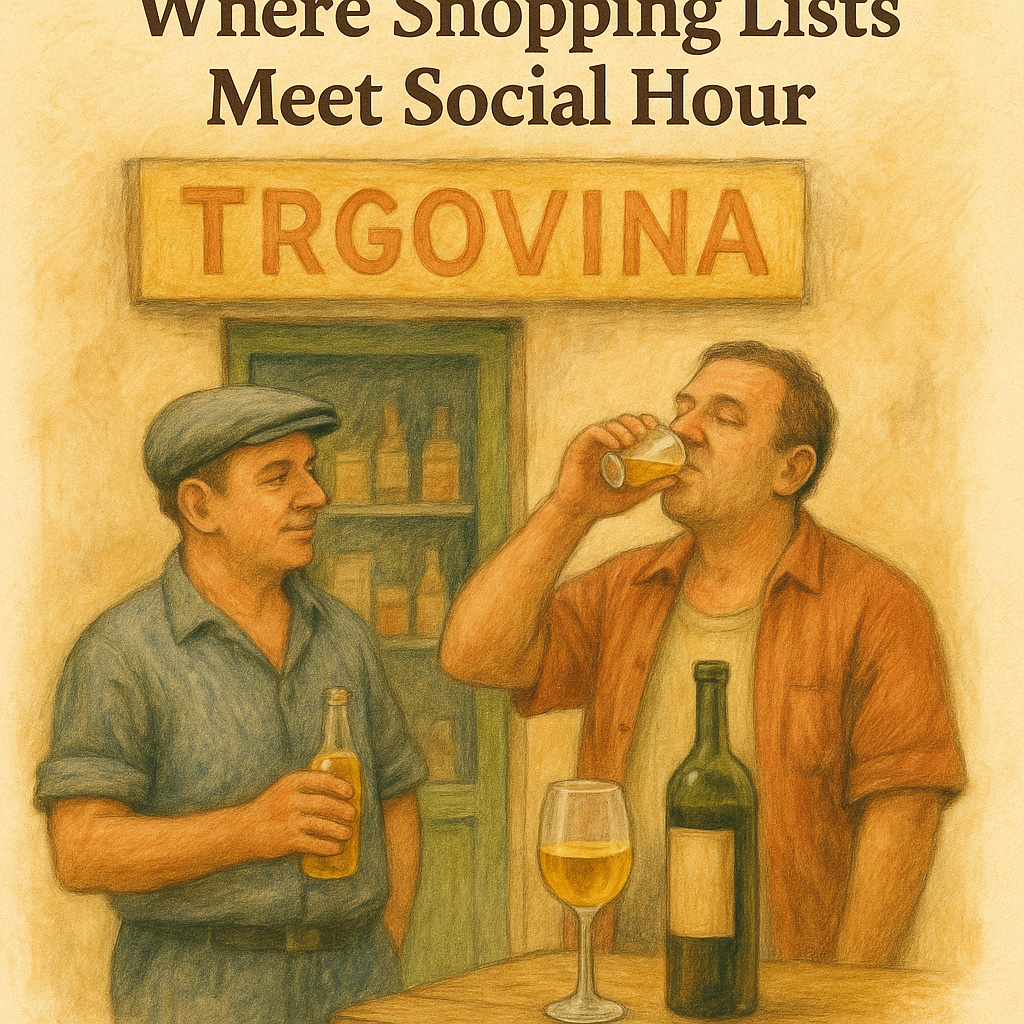
It’s a social tradition, a way for locals to catch up on news, discuss politics, swap fishing stories, or simply pass the time. A cold beer, a small rakija, or even a coffee often accompanies these easygoing gatherings. For many, the store isn’t just for groceries — it’s the heart of community life, where friendships are nurtured one sip at a time.
Cheers in Croatian:
- Živjeli! – Cheers! (literally: “To life!”)
